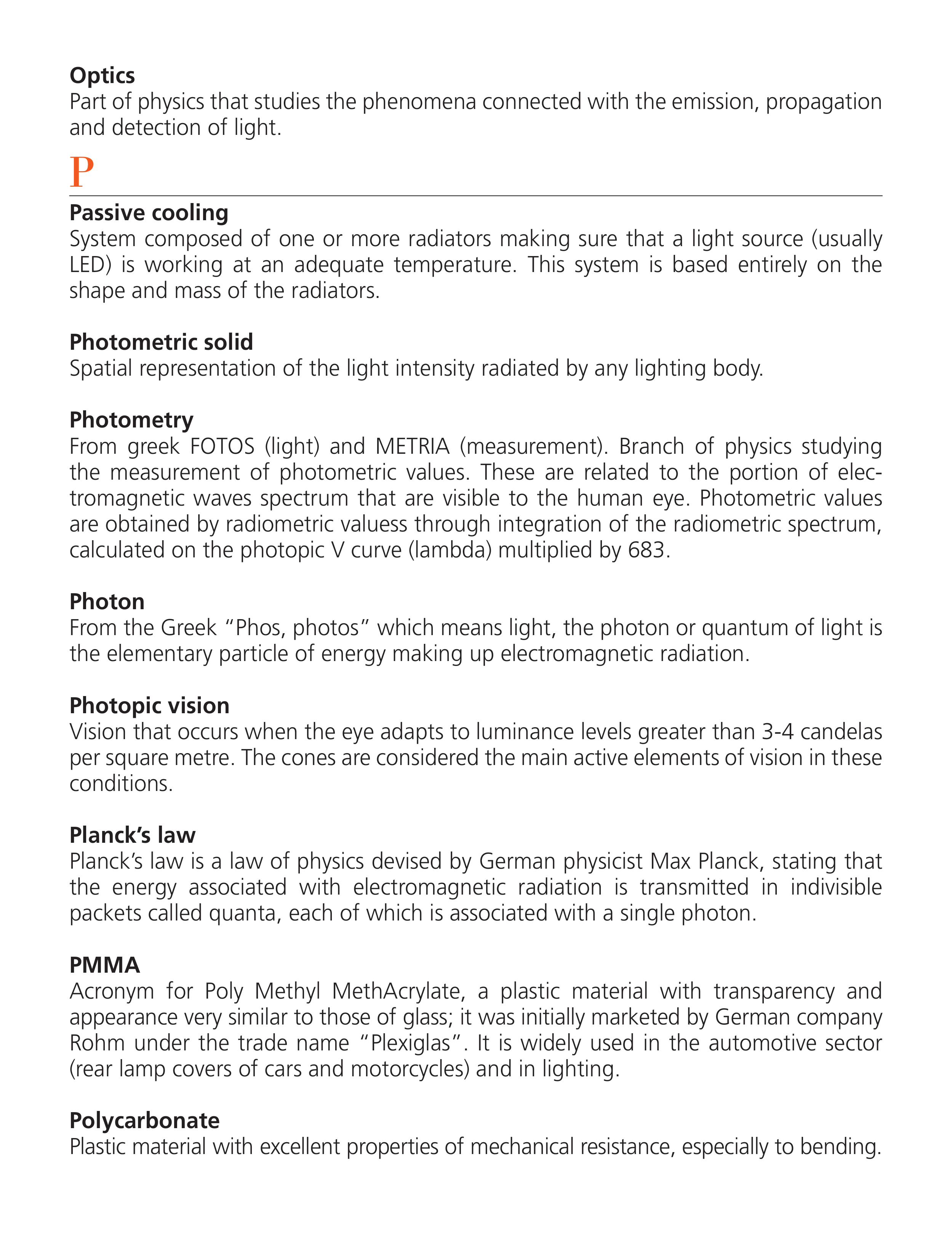Optics
Part of physics that studies the phenomena connected with the emission, propagation
and detection of light.
P
Passive cooling
System composed of one or more radiators making sure that a light source (usually
LED) is working at an adequate temperature. This system is based entirely on the
shape and mass of the radiators.
Photometric solid
Spatial representation of the light intensity radiated by any lighting body.
Photometry
From greek FOTOS (light) and METRIA (measurement). Branch of physics studying
the measurement of photometric values. These are related to the portion of elec-
tromagnetic waves spectrum that are visible to the human eye. Photometric values
are obtained by radiometric valuess through integration of the radiometric spectrum,
calculated on the photopic V curve (lambda) multiplied by 683.
Photon
From the Greek “Phos, photos” which means light, the photon or quantum of light is
the elementary particle of energy making up electromagnetic radiation.
Photopic vision
Vision that occurs when the eye adapts to luminance levels greater than 3-4 candelas
per square metre. The cones are considered the main active elements of vision in these
conditions.
Planck’s law
Planck’s law is a law of physics devised by German physicist Max Planck, stating that
the energy associated with electromagnetic radiation is transmitted in indivisible
packets called quanta, each of which is associated with a single photon.
PMMA
Acronym for Poly Methyl MethAcrylate, a plastic material with transparency and
appearance very similar to those of glass; it was initially marketed by German company
Rohm under the trade name “Plexiglas”. It is widely used in the automotive sector
(rear lamp covers of cars and motorcycles) and in lighting.
Polycarbonate
Plastic material with excellent properties of mechanical resistance, especially to bending.







